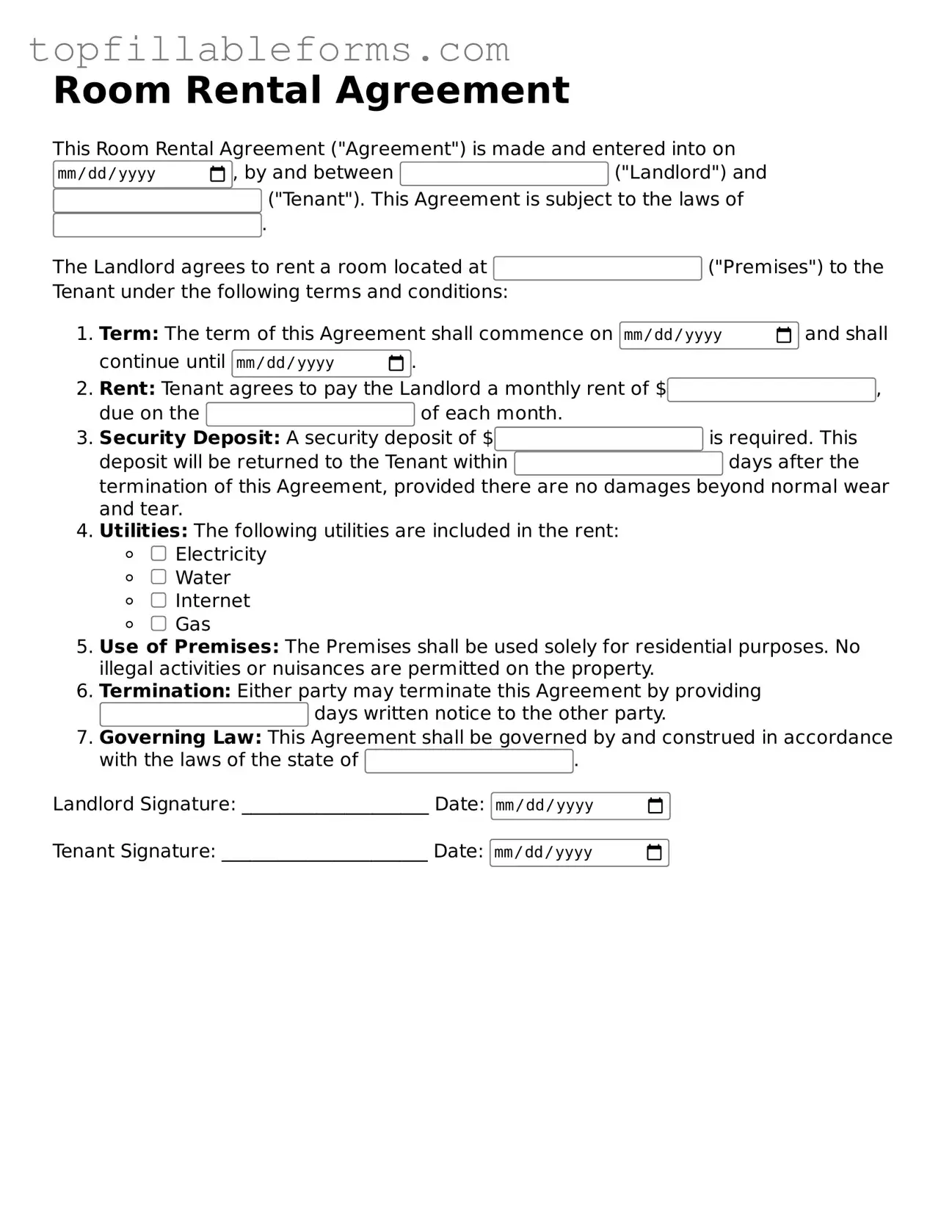Free Room Rental Agreement Form
A Room Rental Agreement is a legal document that outlines the terms and conditions between a landlord and tenant for renting a room in a residential property. This agreement serves to protect the rights of both parties and ensures clear communication regarding rental obligations. Understanding the key components of this form is essential for a successful rental experience.
Open Room Rental Agreement Editor Here
